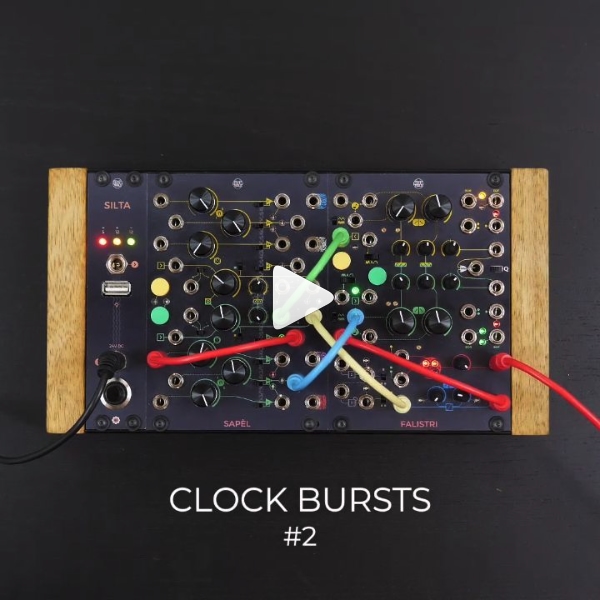Loading cart contents...
- resources /
- techniques /
- Clock Bursts #2
Clock bursts, but without losing the beat! Use the Global Rate of Change to create expressive clock bursts through the Random Clock out – this won’t affect the steady pulse of your main clock.⠀
INGREDIENTS
- 1 SAPÈL
- 1 FALISTRI
DIRECTIONS
- Set FALISTRI’s green generator to ‘Loop’ mode.
- Set the green generator’s Time Scale switch to ‘Short’.
- Set FALISTRI’s yellow generator to ‘Transient’ mode.
- Set the yellow generator’s Time Scale switch to ‘Long’.
- Set the yellow generator’s ‘Rise’ knob fully counterclockwise.
- Set its ‘Fall’ knob roughly around 11 o’clock.
- Patch the 4QM out to your favorite output section.
- Patch SAPÈL’s random clock output to yellow generator’s ‘Trig’ input.
- Set the random clock in ‘More Than’ mode ( > )
- Patch the S&H out to the Fluctuatin Random CV input.
(This will change the probability distribution every time a new random value is sampled, thus changing the clock density through the Probability Distribution parameter. It often translates into a “clock burst”-like effect. - Activate the Probability Distribution for the S&H and use it to control the burst density (leftmost position = few bursts; rightmost position = many bursts).
- (Optional) Patch SAPÈL’s main clock output to the Slew Limiter input.
- Patch the Slew Limiter output to the green generator’s V/oct input.
(Now the pitch modulation will make the steady pulse more noticeable, while the random clock bursts will randomly open the gate.)
Patch
SCHEME
